
iGfp-cr3fo-1209
12
User information (cont'd)
CLEANING PRECAUTIONS
When cleaning:
• Do not use high pressure water hoses
• Do not introduce water faster than waste outlet can drain
• NEVER ON A SELF CONTAINED UNIT WITH AN EVAPORATOR FAN
• NEVER USE A CLEANING OR SANITIZING SOLUTION THAT HAS AN OIL
BASE (these will dissolve the butyl sealants) or an AMMONIA BASE
(this will corrode the copper componets of the case)
To preserve the attractive finish:
• DO USE WATER AND A MILD DETERGENT FOR THE EXTERIOR ONLY
• DO NOT USE ABRASIVES OR STEEL WOOL SCOURING PADS
(these will mar the finish)
evaporator fans
The evaporator fans are located at the center front of these
merchandisers directly beneath the display pans. Should fans
or blades need servicing, always replace fan blades with the
raised embossed side of the blade TOWARD THE MOTOR.
copper coils
The copper coils used in Hussmann merchandisers may
be repaired in the field. Materials are available from local
refrigeration wholesalers.
Hussmann recommends using #15 Sil-Fos for repairs.
tips and troubleshooting
Before calling for service, check the following:
1. Check electrical power supply to the equipment for
connection.
2. Check fixture loading. Overstocking case will affect
its proper operation.
3. If frost is collecting on fixture and/or product, check
that no outside doors or windows are open - allowing
moisture to enter store. These merchandisers were
designed for use in stores were temperature &
humidity does not exceed 75° F and 55% H.
stainless steel cleaning and care
There are three basic things, which can break down your
stainless steel’s passivity layer and allow corrosion.
1. Mechanical abrasion
Mechanical Abrasion means those things that
will scratch the steels surface. Steel Pads, wire
Brushes, and Scrapers are prime examples.
2. Water
Water comes out of our tap in varying degrees of
hardness. Depending on what part of the country
you live in, you may have hard or soft water. Hard
water may leave spots. Also, when heated, hard
water leaves deposits behind that if left to sit, will
break down the passive layer and rust your stainless
steel. Other deposits from food preparation and
service must be properly removed.
3. chlorides
Chlorides are found nearly everywhere. They
are in water, food and table salt. One of the worst
perpetrators of chlorides can come from household
and industrial cleaners.
Don’t Despair! Here are a few steps that can help prevent
stainless steel rust.
1. Use the proper tools
When cleaning your stainless steel products, take care
to use non-abrasive tools. Soft Clothes and plastic
scouring pads will NOT harm the steel’s passive
layer. Stainless steel pads can also be used but the
scrubbing motion must be in the same direction of the
manufacturer’s polishing marks.
2. clean With the polish lines
Some stainless steels come with visible polishing lines
or “grain”. When visible lines are present, you should
ALWAYS scrub in a motion that is parallel to them.
When the grain cannot be seen, play it safe and use a
soft cloth or plastic scouring pad.
3. Use alkaline, alkaline chlorinated or
non-chloride containing cleaners
While many traditional cleaners are loaded with
chlorides, the industry is providing an ever increasing
choice of non-chloride cleaners. If you are not sure of
your cleaner’s chloride content contact your cleaner
supplier. If they tell you that your present cleaner
contains chlorides, ask for an alternative. Also, avoid
cleaners containing quaternary salts as they also can
attack stainless steel and cause pitting and rusting.
4. treat your Water
Though this is not always practical, softening hard
water can do much to reduce deposits. There are
certain filters that can be installed to remove distasteful
and corrosive elements. Salts in a properly maintained
water softener are your friends. If you are not sure of
the proper water treatment, call a treatment specialist.
5. Keep your food equipment clean
Use alkaline, alkaline chlorinated or non-chlorinated
cleaners at recommended strength. Clean frequently
to avoid build-up of hard, stubborn stains. If you boil
water in your stainless steel equipment, remember the
single most likely cause of damage is chlorides in the
water. Heating cleaners that contain chlorides has a
similar effect.
6. rinse, rinse, rinse
If chlorinated cleaners are used you must rinse, rinse,
rinse and wipe dry immediately. The sooner you
wipe off standing water, especially when sit contains
cleaning agents, the better. After wiping the equipment
down, allow it to air dry for the oxygen helps maintain
the stainless steel’s passivity film.
7. never Use hydrochloric acid (Muriatic acid) on
stainless steel
8. regularly restore/passivate stainless steel





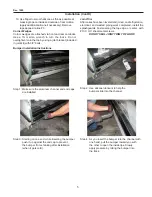
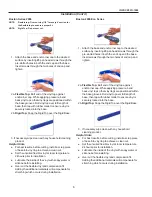

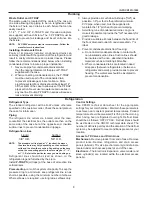
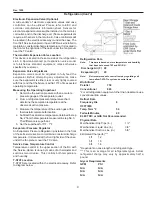

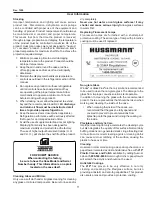
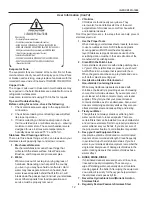



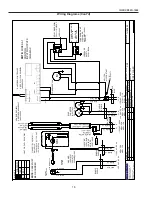
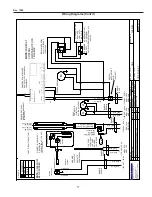



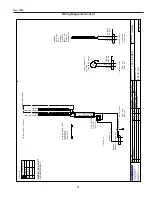
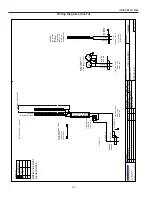



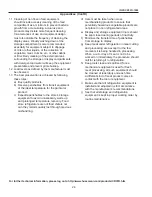


![FRIGOGLASS ICOOL 300 Retro [R290] User Manual preview](http://thumbs.mh-extra.com/thumbs/frigoglass/icool-300-retro-r290/icool-300-retro-r290_user-manual_2338096-001.webp)
